
Topics
Guests
- Francisco Exteberriathe forensic specialist who exhumed the bodies of ousted President Salvador Allende and singer Víctor Jara to determine the nature of their deaths.
Amy Goodman traveled to Spain in 2012 and interviewed Francisco Exteberria, the forensic specialist who exhumed the bodies of ousted President Salvador Allende and singer Víctor Jara to determine the nature of their deaths. “He ended up with a single bullet wound through the back of the head, and with over 50 broken bones throughout his body that we determined were caused by what looked like a machine gun fire,” Exteberria said of Jara. “What happened to Víctor Jara is similar to what happened to other people who 'disappeared' in that period of time. The bodies were found in the streets and brought into the morgue where they were identified. This was very common at the early stages of the dictatorship. Later, 'the disappeared' were still being killed, but the bodies were hidden, in mass graves, mines and other places.”
Visit our In-Depth page that features all of Democracy Now!’s coverage of the 1973 Chilean Coup.
FRANCISCO ETXEBERRIA: [translated] For many years I have worked with the Human Rights Commission of Chile, hence I worked with other doctors from the medical service from Santiago. For that reason, I have worked locating and exhuming the bodies of the disappeared. This work was primarily focusing on determining the type of death as opposed to the identity of the dead. Some of the disappeared people included Víctor Jara, the musician, and, more recently, the body of President Salvador Allende. For a long time, there was a debate whether he was assassinated or committed suicide, as reported by his family. With the authorization of the judicial power and the family of the deceased, we proceeded to the exhumation and analysis of the body. This provided evidence beyond the shadow of a doubt that he did indeed commit suicide. This is not the first investigation of his death. The difference with a previous investigation is that it was conducted in 1973 under the military dictatorship, while this one is done under a democratic government. So we were able to confirm the testimonies of eyewitnesses who were present when Allende died.
AMY GOODMAN: How you were able to determine that?
FRANCISCO ETXEBERRIA: [translated] First, we begin with the photographs of the scene where he was, where he died, and then we look at the skeleton. The skeleton was almost entirely intact. We found wounds on the hands and one wound at the bottom of the chin that in fact went through his skull on the left side. That shows that there was probably a gun on the floor, and using his finger, Allende reached out and was able to pull the trigger. There were two points of impact on the wall behind him where he died. From the evidence that we had, there was no reason to think that there were other shots fired. This coincides with statements made by eyewitnesses who had talked to Salvador Allende minutes before his death.
AMY GOODMAN: Are you suggesting that he, in some way, was tied, if you said he reached over from being on the ground, for the gun?
FRANCISCO ETXEBERRIA: [translated] He was seated on a couch. He was supporting the weapon on the floor. It was an AK-47, and he was holding the weapon with his left hand. And with his right hand, he was able to reach out and pull the trigger.
AMY GOODMAN: And what happened to Víctor Jara? What did you reconstruct?
FRANCISCO ETXEBERRIA: [translated] What happened in the case of Víctor Jara is that he was at a university in Santiago, arrested there, and witnesses confirm that. Then we believe he was brought into a locker room. The military knew who he was. He was a popular person. He ended up with a single bullet wound through the back of the head and with over 50 broken bones throughout his body that we determined were caused by what looked like machine gun fire. After he died, they fired many, many shots at him and then dragged the body out into the streets where people would find it and think perhaps that it had been a gunfight between the authorities and others.
What happened to Víctor Jara is similar to what happened to other people who “disappeared” in that period of time. The bodies were found in the streets and brought into the morgue, where they were identified. This was very common at the early stages of the dictatorship. Later, probably due to their international political reputation, “the disappeared” were still being killed, but the bodies were hidden in mass graves, mines, throwing them into the sea, and other places.
AMY GOODMAN: The story of Víctor Jara was—that was often told was that his hands were broken—the great musician, the great guitarist. Is that what you found?
FRANCISCO ETXEBERRIA: [translated] For what we found, no, this is not at all true. We did not find that his hands were broken or that there were signs of wounds. That he might have been treated badly while he was detained, yes, that is possible. However, for what we found, his hands were not broken, and there was no amputation.

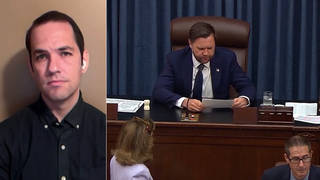
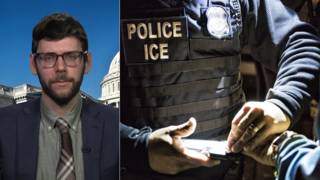
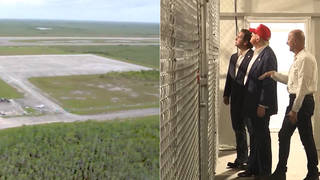
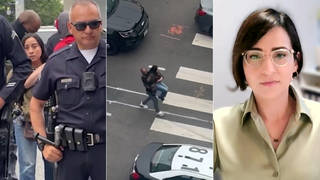

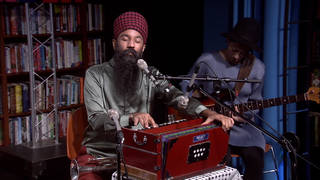

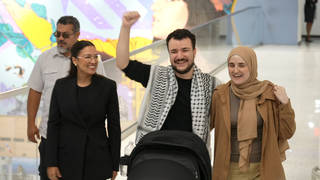

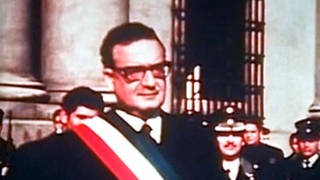

Media Options